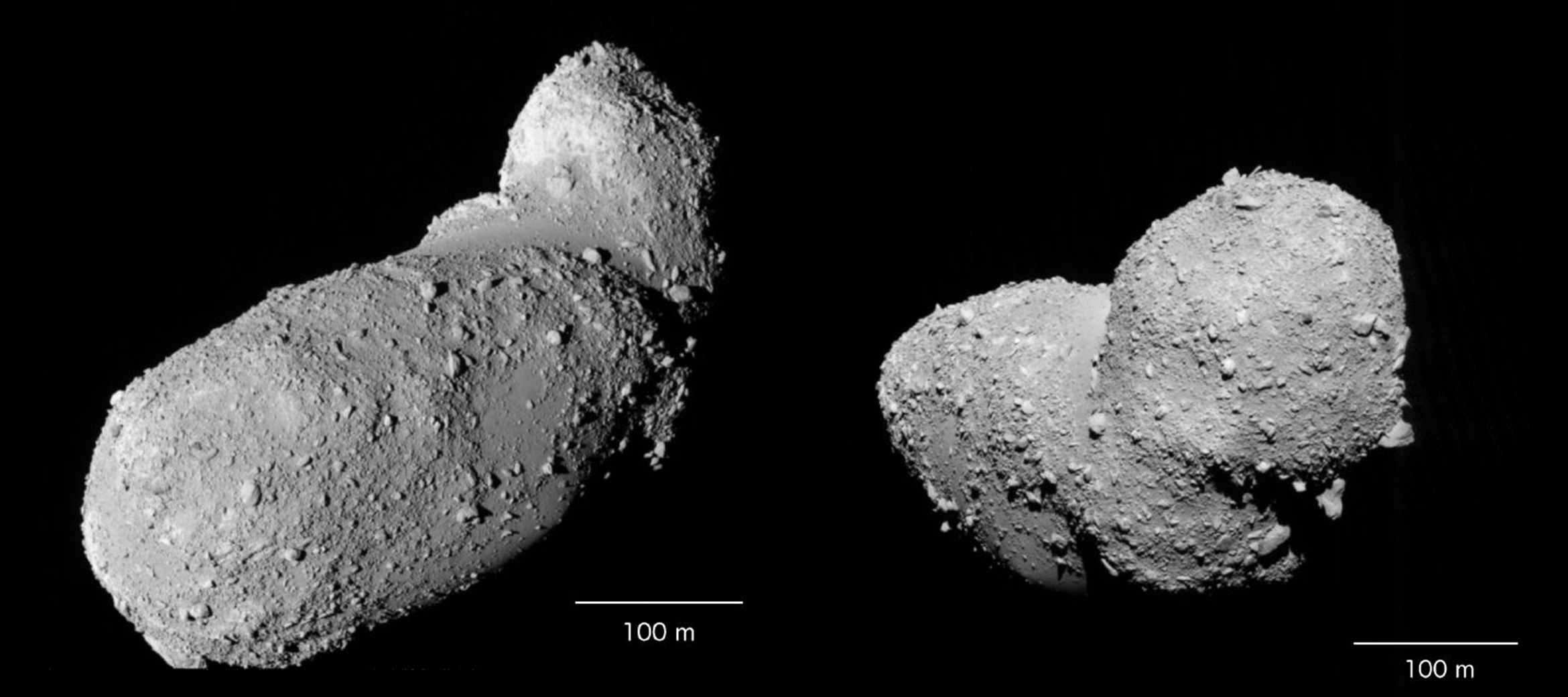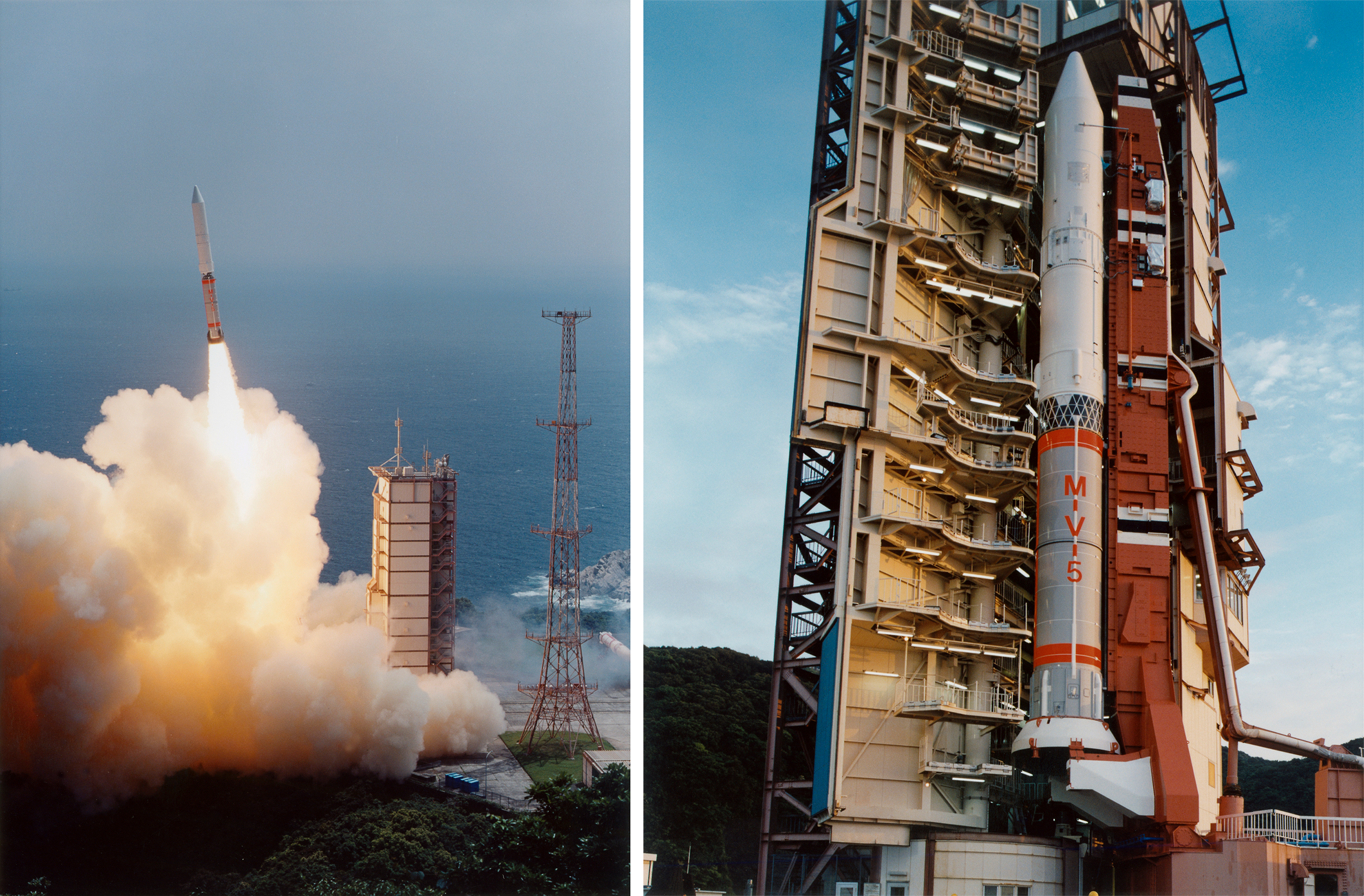Rubble pile asteroids are made up of the rubble left behind after a single, giant asteroid, called a monolithic asteroid, is broken apart by a collision. Evidence points to monolithic asteroids having a life span of around 100 million years, however, the life span of rubble pile asteroids is unknown. Because they are entirely made up of loose boulders and rocks it was predicted that they would be less durable, with a life span of only several hundreds of thousands of years in the asteroid belt. However, recent analysis of dust particles from a 500-meter-long rubble pile asteroid, Itokawa, has revealed the opposite.

Images of the rubble pile asteroid Itokawa taken on the Hayabusa mission (C) Japan Aerospace Exploration Agency (JAXA)
The new results from an international collaboration led by Curtin University have revealed that the Itokawa rubble pile asteroid is almost as old as the solar system itself. Lead author Prof. Fred Jourdan explained, “The huge impact that destroyed Itokawa’s monolithic parent asteroid and formed Itokawa happened at least 4.2 billion years ago. Such an astonishingly long survival time for an asteroid the size of Itokawa is attributed to the shock-absorbent nature of rubble pile material. In short, we found that Itokawa is like a giant space cushion, and very hard to destroy.”
The findings suggest that rubble piles are both hard to destroy once they are created, and more abundant than previously thought. This knowledge is important for developing mitigation strategies to prevent asteroid collisions with Earth.
The dust particles, returned to Earth by the Japanese Space Agency’s Hayabusa 1 probe, were analysed using a large range of microscopy techniques at our Curtin linked lab at the John De Laeter Centre by co-authors and facility leaders, A/Prof. William Rickard and Dr David Saxey. These techniques include atom probe tomography (see banner image), scanning electron microscopy, electron microprobe analysis, electron backscatter diffraction, and time-of-flight secondary ion mass spectrometry. The dating itself was performed by Prof. Jourdan at the Western Australian Argon Isotope Facility within the same centre. This facility, along with the geoscience atom probe, is also supported by fellow NCRIS project, AuScope.

The HAYABUSA 1 probe at launch (C) Japan Aerospace Exploration Agency (JAXA)
Co-author A/Prof. Nick Timms said “We set out to answer whether rubble pile asteroids are resistant to being shocked or whether they fragment at the slightest knock. Now that we have found they can survive in the solar system for almost its entire history, they must be more abundant in the asteroid belt than previously thought, so there is more chance that if a big asteroid is hurtling toward Earth, it will be a rubble pile.
“The good news is that we can also use this information to our advantage—if an asteroid is detected too late for a kinetic push, we can then potentially use a more aggressive approach like using the shockwave of a close-by nuclear blast to push a rubble-pile asteroid off course without destroying it.”
F. Jourdan et al., PNAS 2023 DOI: 10.1073/pnas.2214353120
Atom probe tomogram of iron-rich lamellae from the Itokawa asteroid.
July 3, 2023